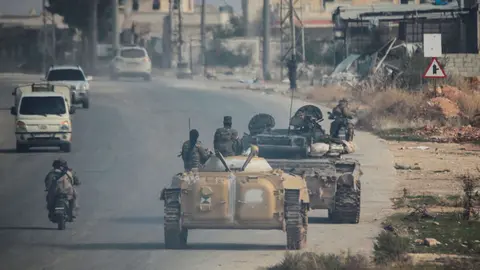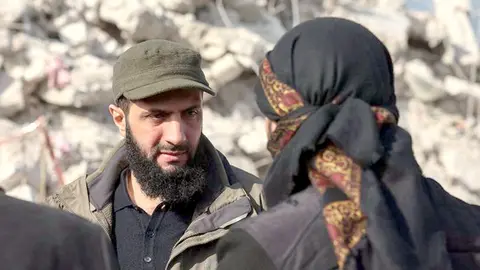Trump’s trillion-dollar question

The devastation also includes the sense of rampant global populism epitomised by Trump and his worldview of industry and economics.
Two types of destruction intersect in Gaza: immediate destruction stemming from the mindset of today’s policymakers and long-term destruction from what could happen tomorrow.
It is a pure coincidence that US President Donald Trump’s statements about the evacuation or eviction of Palestinians from Gaza to Egypt and Jordan occurred at a time when Al Jazeera broadcast a news documentary about preparations for “Al-Aqsa Flood” as engineered by its top mastermind Yahya Sinwar. It may be too early to say how history will eventually judge Sinwar.
At this stage we have seen only the first ripple effects of the event with the beneficiaries and the victims compiling their own tallies.
The Syrian opposition and its leader Ahmed al-Sharaa are assessing the consequences of the fall of Bashar al-Assad’s regime. Assad himself is still in a state of shock and has not yet fully grasped what has occurred.
Some Lebanese cannot adjust to living in a world without “Al-Sayyid” and to a Lebanon without the absolute oversight of Hassan Nasrallah whose hand used to reach into everything and determined every move. Every time they look back, the Lebanese are shocked by the enormity of what has happened as “Al-Sayyid” disappeared, and his legacy vanished within days.
I do not know how the Iranians see their losses on the ground and how much they paid for the “Sinwar Flood.”
It is difficult to know how they assess their losses from an historical perspective. However, it may be a useful exercise for an historian to attempt an update of the inventory made by 10th century scholar Abu Al-Faraj Al-Isfahani in his book of Shia martyrology, “The Fighting of the Talibians.”
Based on Al-Isfahani’s inventory one could objectively ask if the Shia have ever lost a figure of the calibre of Hassan Nasrallah.
With the same degree of objectivity, one can also ask: who will replace Supreme Leader Ayatollah Ali Khamenei?
The answer seemed obvious when the late Iranian President Ebrahim Raisi was alive. The latter was no doubt slated to be Khamenei’s successor, and the transition of the mantle of power to him would have been more than natural. Replacing Khamenei did not represent a major dilemma. The loss of Hassan Nasrallah was more problematic.
The most prominent Shia figure suddenly disappeared. Based on the names of those listed in “The Fighting of the Talibians,” Nasrallah would be the most important martyrdom figure, after Imam Hussein bin Ali, if the book’s inventory were to encompass Shia history till present day.
One cannot gauge the moral weight of every Shia figure in history. But certainly, Hassan Nasrallah was an exceptional figure who will be difficult to replace, especially since his assassination was surrounded by dramatic optics with orange-coloured smoke and thunderous sound following the strikes by enemy aircraft.
Nasrallah had warned about such an assault for years. His warnings were not heeded as if fate destined him to be the second martyrdom figure on the list after Hussein.
Some saw in this a semblance of a Quranic prophecy. The Muslim holy book did not warn of Shia and Sunnis combatants, but it did certainly warn of the Jews by whose hands this last Shia martyr fell.
The drama has come full circle now with illusions and supernatural elements added to the picture.
The scene of devastation is linked to what has happened and what is to come. The devastation also includes the sense of rampant global populism epitomised by Trump and his worldview of industry and economics.
It suffices to listen to what Trump says, and one will see amazing things. If we listen to his followers, we are likely to discover a unique world in terms of financial and technological dimensions. It is a world where one can hear a dialogue such as: “Can I have 500 billion dollars?” “Take 600 billion,” would the reply say; and then: “No, I want a trillion dollars.”
This is a world where AI-driven technological miracles happen, without us realising their nature, or how they occurred. These are black box-type technologies, where data are fed in and results churned out without us understanding how they work.
During all this, our world sits on billions but has no choice but to say yes or no. It is hallucinating. Even the experts can hardly offer convincing answers.
As he deals with an Arab region that faces serious financial and human crises, such as in Jordan and Egypt, Trump utters dangerous statements that carry existential significance. Such notions have reverberated in the minds of the two countries’ leaders and other politicians since the outbreak of the “Al-Aqsa Flood.”
All the region’s concerns are embodied in a sentence or two that summarise what is happening. The two countries and their neighbours must find the solutions. Amazing statements are uttered about our region. Some suggest moving out hundreds of thousands of people from Gaza and finding them refuge in Jordan and Egypt. Other statements talk of tens of billions to be invested by countries of the region in the United States.
We had become accustomed to this kind of semantic chaos before Trump’s departure from the White House, four years ago. The chaos is now back without a minimum of media responsibility. We are at times asked whether we are afraid of Trump. It suffices to listen to what he has said in less than a week since he was inaugurated. The strategic, media and political ebb and flow is beyond our ability to cope. What does the trillion-dollar ebb and flow between the United States and Saudi Arabia mean? What does a human ebb and flow involving hundreds of thousands of Palestinians from Gaza mean for countries like Egypt or Jordan mean? At the same time, the world is a stir over the fate of hundreds, not hundreds of thousands, on the Mexican American or Canadian American borders.
Is the Arab region worried? No doubt it is, as it finds itself in the crosshairs of many ebb and flow waves. Back at the White House, Trump is hungry for political moves and for great “achievements” in the region. During his first term as president, he asked for tens of billions of dollars and limited demographic changes to those that would not affect the region’s map. In his second term, Trump is seeking hundreds of billions of dollars and demographic changes that would redraw the maps of the region, people and borders included. This is a region where belts of poverty and wealth are intertwined, and where countries with populations of just one million live side by side with nations whose populations are more than 100 million.



